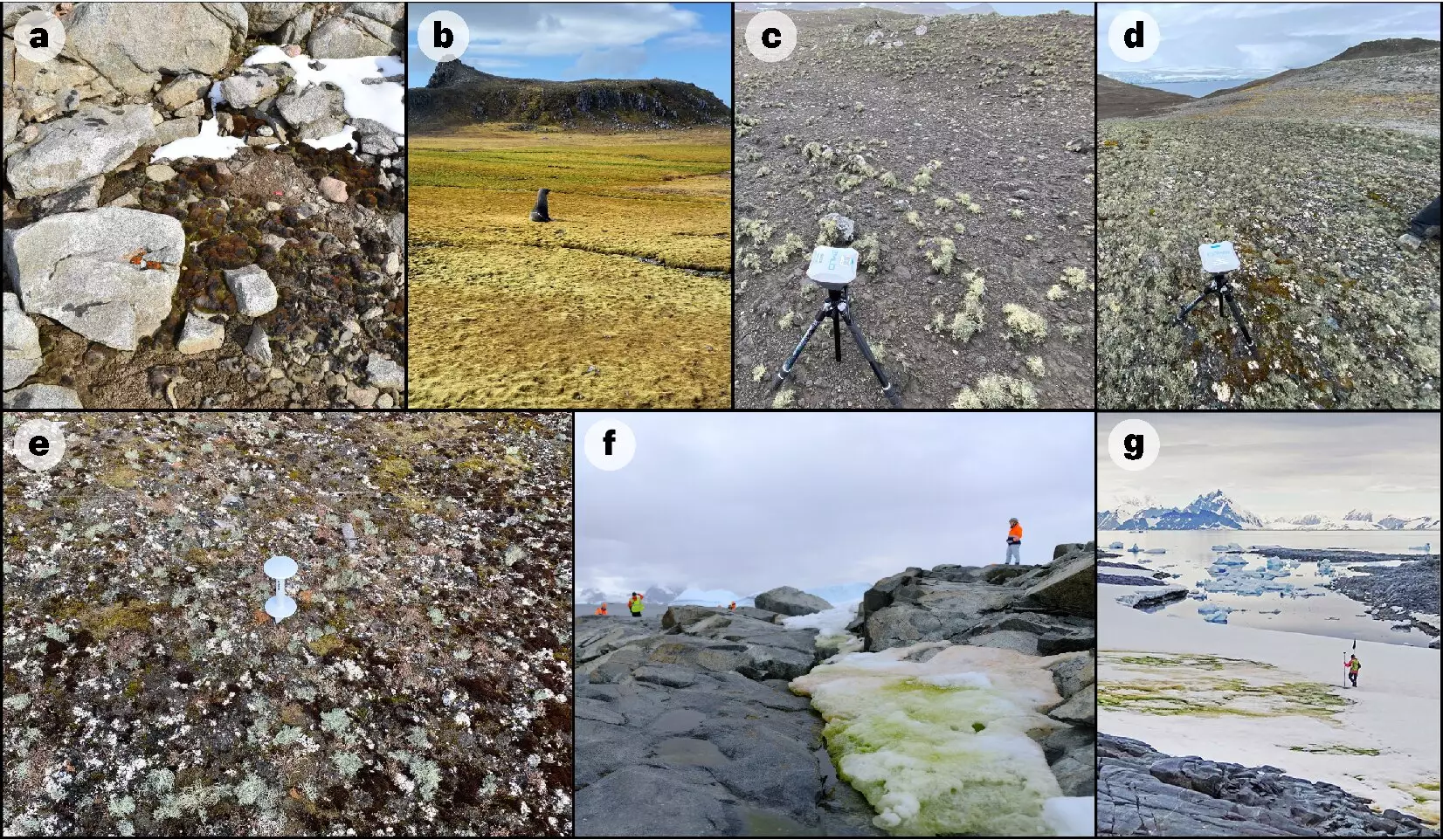

The icy expanse of Antarctica has long been regarded as a harsh, desolate environment, where life teeters on the edge of possibility. However, a groundbreaking study has unveiled the presence of previously uncharted plant life across the continent, marking a monumental leap in ecological research. Published in the esteemed journal Nature Geoscience, this first-ever continent-wide mapping study reveals that areas previously thought to be barren are, in fact, teeming with intricate ecosystems of mosses, lichens, and algae. This research holds significant implications for conservation strategies in a rapidly changing climate.
The innovative methodology employed in this study utilized a European Space Agency satellite, which systematically surveyed the vast landscapes of Antarctica. Complemented by field measurements collected over multiple summer seasons, researchers gathered robust data to map out nearly 45 square kilometers of vegetation—a staggering area equivalent to approximately three times the size of Lake Windermere in the U.K. This meticulous approach not only provides an extensive overview of Antarctic flora but also offers a vital baseline for monitoring the ecological shifts that may occur as climate change accelerates.
An international coalition of scientists spearheaded the research, with contributors from renowned institutions like the University of Edinburgh, Norwegian Institute for Nature Research, British Antarctic Survey, and the Scottish Association for Marine Science. Their collaborative effort underscores the necessity of global partnerships in tackling environmental challenges.
One of the key findings of the research revealed that over 80% of the detected vegetation was concentrated in the Antarctic Peninsula and its neighboring islands. While this discovery is promising, the team noted that this growth constitutes a mere 0.12% of Antarctica’s total ice-free region, highlighting the need for focused conservation strategies. The existing Antarctic Specially Protected Area (ASPA) system appears insufficient in safeguarding these delicate habitats, raising concerns among experts about the long-term viability of Antarctica’s unique ecosystems.
Strongly rooted in unforgiving climates, the dominant species—mosses and lichens—exhibit remarkable adaptations that enable them to thrive in extreme conditions. Their ability to recycle carbon and nutrients at a local level is crucial for maintaining the ecological balance within their habitats. Understanding their precise spatial distribution across the continent paves the way for more informed conservation measures that could effectively protect their future.
The precarious position of Antarctica’s vegetation makes it an invaluable indicator of climate variations. Previous studies indicate that these resilient organisms can serve as crucial barometers for understanding broader environmental changes. By monitoring these plant communities, researchers can gather insights relevant to other fragile ecosystems worldwide, notably those in the Arctic. The understanding gained from examining how Antarctic vegetation responds to climatic shifts could be a crucial tool in the global fight against climate change.
Charlotte Walshaw, a lead researcher, expressed the significance of their findings, stating, “Our continent-scale map provides key information on vegetation presence in areas that are rarely visited by people.” Dr. Claudia Colesie echoed this sentiment, emphasizing the resilience of lichens and mosses, which endure the harshest conditions on the planet. Their findings are positioned to spur more targeted conservation efforts aimed at preserving these remarkable organisms.
The implications of this study extend beyond immediate conservation strategies. The innovative use of remote sensing technologies presents a low-impact alternative for studying and monitoring Antarctica’s fragile ecosystems. As climate change progresses, these methods will become increasingly vital in tracking modifications to the vegetation and the overall health of the continent.
The continent-wide mapping of plant life across Antarctica not only reshapes our understanding of this enigmatic land but also provides essential insights for conserving its unique ecosystems. The study represents a clarion call for heightened awareness and action regarding the vulnerability of polar ecosystems amid escalating climate pressures. With continued research and collaboration, scientists can develop adaptive strategies to safeguard the future of Antarctic flora and, by extension, contribute to the broader narrative of global environmental conservation.
In the battle against climate change, reforestation has emerged as a beacon of hope, particularly…
Mars continuously captivates scientists and enthusiasts alike with its astonishing geological phenomena. Recently, the Perseverance…
In the rapidly advancing realm of technology, the emergence of quantum computing heralds a transformative…
Opioids have long been heralded as among the most effective solutions for alleviating intense pain,…
As of late March 2025, the measles outbreak that originated in west Texas has spiraled…
Water contamination by nitrates poses a dire threat not only to ecosystems but also to…
This website uses cookies.